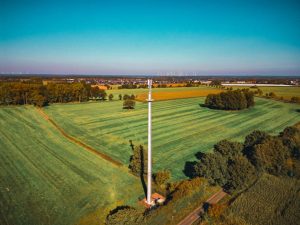Revolutionizing DNS: How Autocast Optimizes Anycast Deployment

The Internet infrastructure is constantly evolving to deliver better speed, resilience, and performance. For operators of Domain Name Services (DNS), one of the critical challenges is ensuring visitors around the globe experience low latency and high reliability when interacting with their services. As a solution, IP anycast has emerged as a routing mechanism that spreads client requests across multiple servers using the same IP address. But how can operators design the most efficient deployments across global points of presence (PoPs)? Enter Autocast, a revolutionary data-driven method that optimizes anycast site selection to achieve faster response times and enhanced performance using only unicast measurement data.
What Makes Autocast Unique?

Pexels
Autocast stands out as a game-changer in the field of DNS operations by addressing a significant technical hurdle. Traditional methods for optimizing anycast deployments often require extensive manual testing or rely on costly Border Gateway Protocol (BGP) experiments. Autocast eliminates these inefficiencies by predicting the latency performance of resolvers to a proposed anycast deployment with millisecond-level precision, without requiring any anycast BGP announcements. This makes Autocast both time- and cost-efficient for operators, especially those managing hundreds of potential PoPs worldwide.
The innovative tool works by leveraging unicast latency data to simulate how an anycast deployment might perform in real-world conditions. By analyzing this data, DNS operators can achieve an optimized balance between global coverage and low latency, while avoiding unnecessary expenses related to redundant or suboptimal PoPs. This is particularly vital for services like .nl, where the client experience depends heavily on fast and reliable connections.
The Science Behind Autocast

Pexels
Autocast operates under two primary assumptions: that clients are routed to the anycast site with the lowest latency, and that unicast and anycast latencies to the same site are identical. While these assumptions do not always perfectly hold due to the intricacies of BGP and ISP policies, they provide a robust foundation for latency predictions. Using these principles, Autocast evaluates potential site configurations with an optimization algorithm known as Simulated Annealing. This probabilistic approach tests different PoP combinations to identify the fewest sites capable of delivering the lowest median latency to clients.
One of the impressive outcomes of Autocast is its ability to automate and simplify the trial-and-error process typically associated with site selection. By focusing on optimizing median client latency, Autocast ensures that DNS services can deliver smoother global operations while reducing costs compared to deploying every available PoP. Practical tests involving infrastructure providers such as Vultr revealed that Autocast greatly improves anycast performance, achieving near-optimal latency for most deployment scenarios.
Real-World Applications and Future Development

Pexels
The implementation of Autocast has already demonstrated significant potential for DNS operators. For example, experiments with Vultr’s 32 global PoPs revealed that optimal deployments could be created with just 11-13 well-distributed sites, saving resources while maintaining low latency. Moreover, predicted latencies using unicast data closely matched observed results from real-world anycast deployments, confirming the efficacy of Autocast’s methodology.
Looking ahead, the developers of Autocast aim to refine its capabilities by incorporating additional variables, such as mixed infrastructure providers and more precise catchment predictions. These improvements could further unlock its utility for operations involving highly distributed systems or services requiring enhanced resiliency against Distributed Denial of Service (DDoS) attacks. With open-source tools and collaboration efforts underway, including research contributions from the University of Twente, Autocast signals a bright future for DNS operators seeking smarter and more efficient network management solutions.
For more information on Autocast and its potential applications, feel free to contact the team at sidnlabs@sidn.nl. This bleeding-edge leap in Internet technology is set to empower DNS operators worldwide by streamlining deployments, reducing costs, and enhancing user experiences globally.




